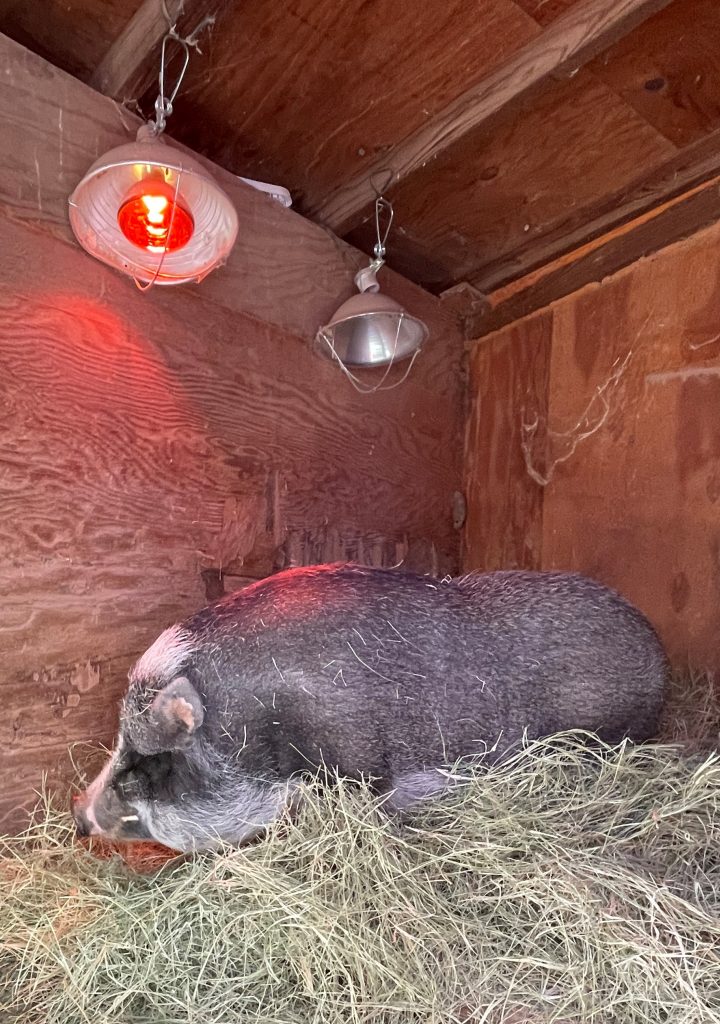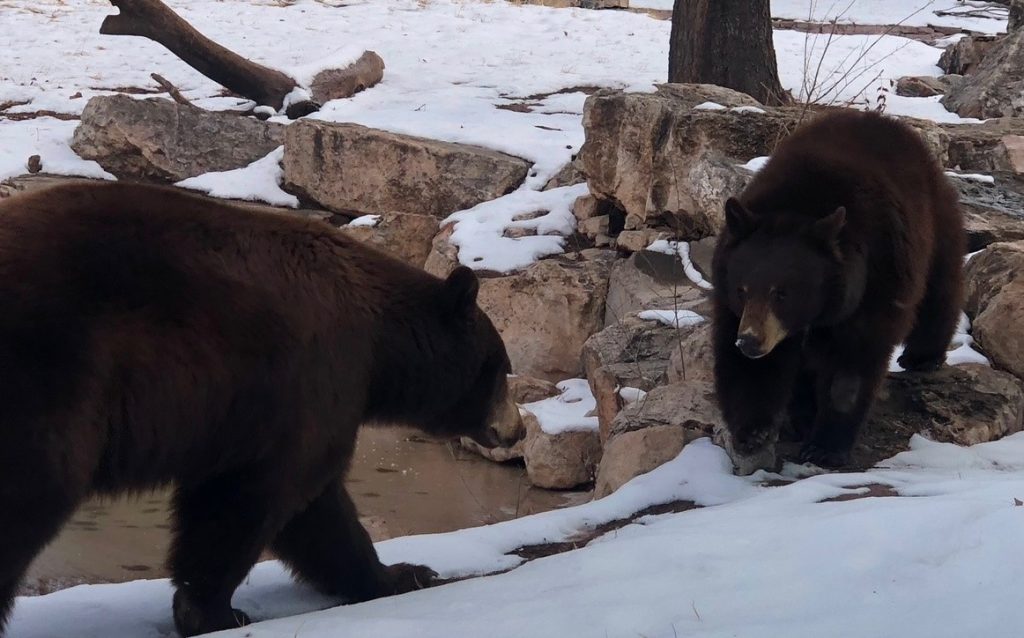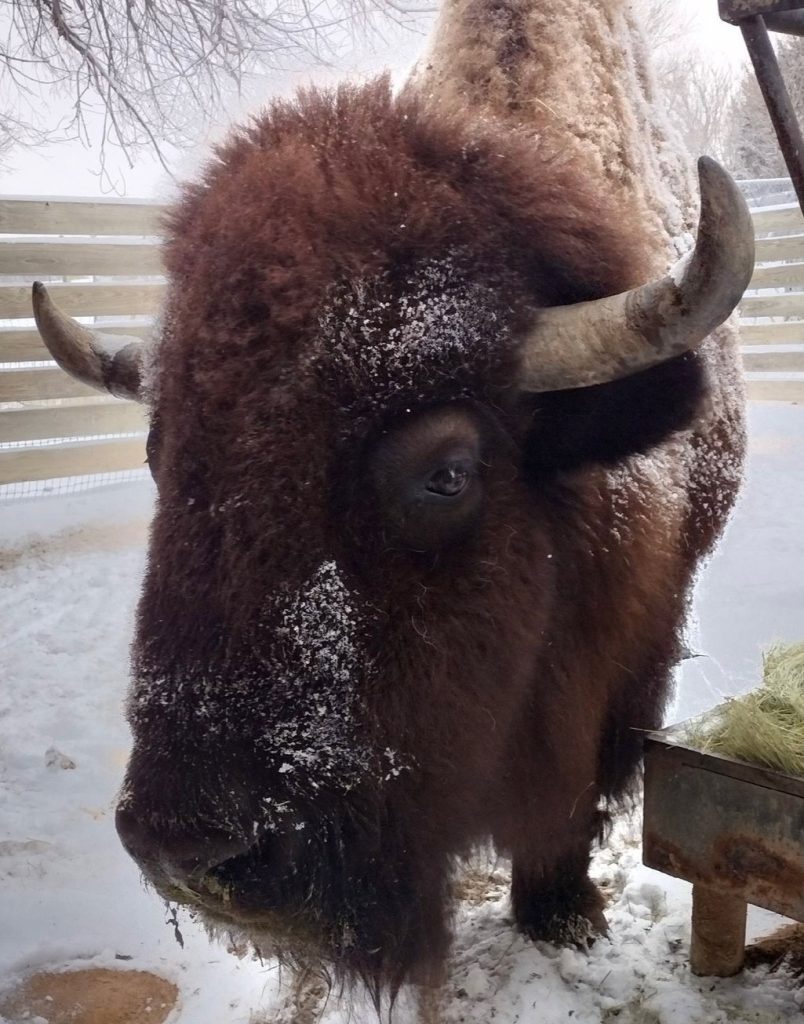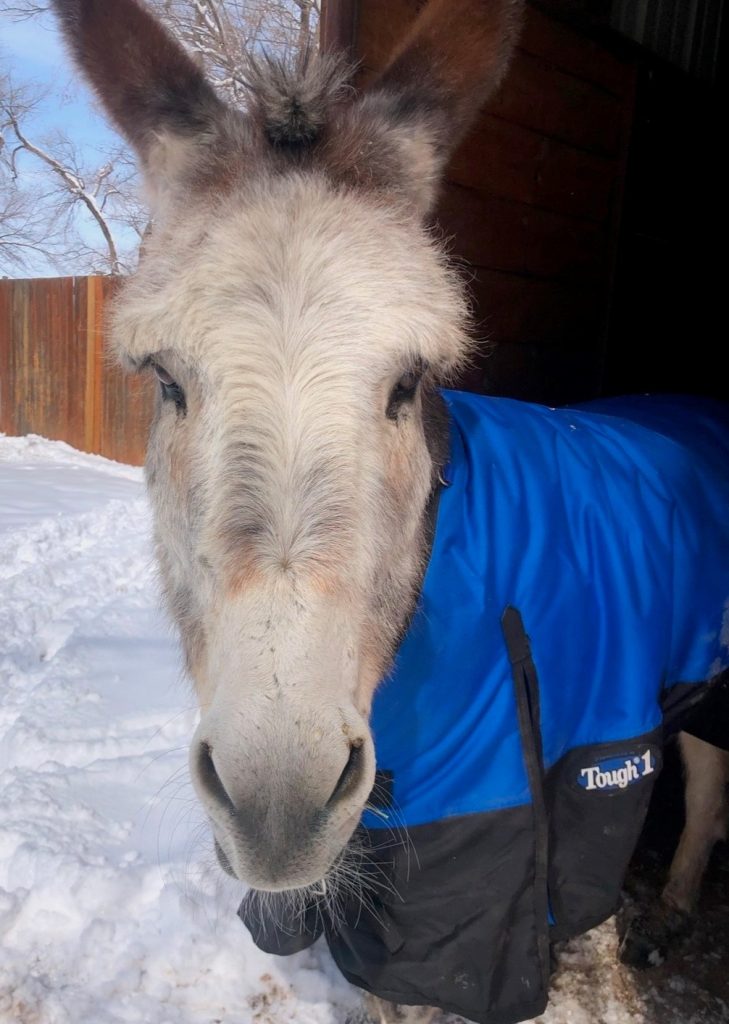Working at the Amarillo Zoo and caring for its wild residents requires a variety of special skills, including the ability to put a coat on a donkey.
“This is just a part of the winterization process at the Amarillo Zoo,” Amarillo Zoo Curator Berkeley Hilliard said with a laugh.
As winter progresses in Amarillo and it becomes colder, Amarillo Zoo staff winterize the zoo in many different ways to ensure the comfort and safety of the animals.
“We definitely keep an eye on the weather on a day-to-day basis,” Hilliard said. “If it is going to be cold, we put up slide covers at enclosure entrances to prevent drafts and we check all heaters and heat lamps. We also put down hay and shavings to prevent the animals from being on a cold floor.”
“It is all part of the winterization process.”
The zoo also operates according to the outside temperature and the needs of individual animals:
- If the temperature is 45 degrees or higher, monkeys, lemurs and kangaroos are allowed outside access and also access to their inside enclosures with a heat source.
- If the temperature is below 45 degrees, monkeys, lemurs and kangaroos are inside and not on public exhibit.
- If it is 60 degrees or above, animals are on outside exhibit.
- Big cats such as lions are allowed outside if it is 32 degrees or higher.
- The Amarillo Zoo is closed if the forecasted high temperature is below 32 degrees.
“We will close the zoo at this point so the animals can stay inside,” Hilliard said. “This also helps our zookeepers.”
If the animals are inside for an extended period of time due to cold temperatures, they are provided with activities to keep them busy.
“For example, we offer them balls with food hidden inside – things like that – to keep them active and busy,” Hilliard said. “We want to make sure when they are inside they still have the ability to be active.”
There are residents of the Amarillo Zoo that love the cold weather.
“We have a lot of native species that can handle temperatures from zero degrees to 112 degrees,” Hilliard said. “Our bison and elk love the cold weather.”
The zoo’s black bears (Mesa, Oyster and Truffles) sometimes opt to sleep out winter.
“Our black bears will sometimes torpor, which is a form of semi-hibernation,” Hilliard said. “They become less active, sleep more and eat less.”
For more information contact City of Amarillo Media Relations Manager Dave Henry at (806) 378-5219 or by email at David.Henry@amarillo.gov.
###




